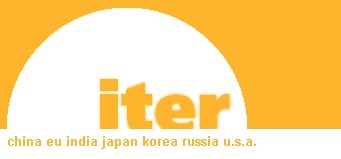Part 2 of 2 Parts (Please read Part 1 first)
Ricci explained that “Greenwald derived the law empirically, that is completely from experimental data—not a tested theory, or what we'd call 'first principles’. Still, the limit worked pretty well for research. And, in some cases, like DEMO (ITER's successor), this equation constitutes a big limit to their operation because it says that you cannot increase fuel density above a certain level.”
Working with fellow tokamak teams at other institutions, the Swiss Plasma Center designed an experiment where it was possible to use highly sophisticated technology to precisely control the amount of fuel injected into a tokamak. Their experiments were carried out at the worlds largest tokamaks, the Joint European Torus (JET) in the UK, as well as the ASDEX Upgrade in Germany (Max Plank Institute) and EPFL's own TCV tokamak. This broad experimental effort was made possible by the EUROfusion Consortium (EC). The EC is the European organization that coordinates fusion research in Europe. EPFL participates in the EC through the Max Planck Institute for Plasma Physics in Germany.
Maurizio Giacomin is a Ph.D. student on Ricci’s team. At the same time that the big international experiment was being run, he began to analyze the physical processes that limit the fuel density in tokamaks. His goal was to derive a first-principles law that can correlate fuel density and tokamak size. Part of his work involved using advanced simulations of the plasma carried out with a computer model.
Ricci said, “The simulations exploit some of the largest computers in the world, such as those made available by CSCS, the Swiss National Supercomputing Center and by EUROfusion. And what we found, through our simulations, was that as you add more fuel into the plasma, parts of it move from the outer cold layer of the tokamak, the boundary, back into its core, because the plasma becomes more turbulent. Then, unlike an electrical copper wire, which becomes more resistant when heated, plasmas become more resistant when they cool down. So, the more fuel you put into it at the same temperature, the more parts of it cool down—and the more difficult is for current to flow in the plasma, possibly leading to a disruption. Turbulence in a fluid is actually the most important open issue in classical physics. But turbulence in a plasma is even more complicated because you also have electromagnetic fields.”
Ricci and his team were able to develop the needed computer model and they derived a new equation for fuel limits in a tokamak which aligns very well with the experimental data. Their report was published in Physical Review Letters. Their work updates the classic principle of Greenwald.
The new equation developed by Ricci and his team proposed that the Greenwald limit can almost be doubled in terms of fuel in ITER. This means that tokamaks similar to ITER can actually use almost twice as much fuel to produce plasmas without worrying about disruptions. Ricci said, “This is important because it shows that the density that you can achieve in a tokamak increases with the power you need to run it. “Actually, DEMO will operate at a much higher power than present tokamaks and ITER, which means that you can add more fuel density without limiting the output, in contrast to the Greenwald law. And that is very good news.”
Nuclear Fusion 178 - EPFL Has Revised A fundamental Principle For Fusion Research - Part 2 of 2 Parts
Nuclear Fusion 178 - EPFL Has Revised A fundamental Principle For Fusion Research - Part 2 of 2 Parts
Latitude 47.704656 Longitude -122.318745
